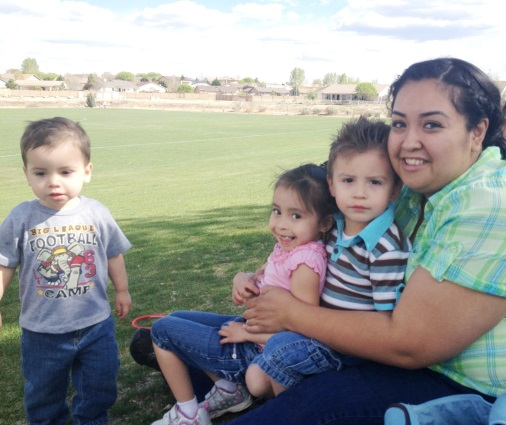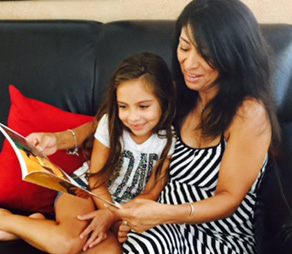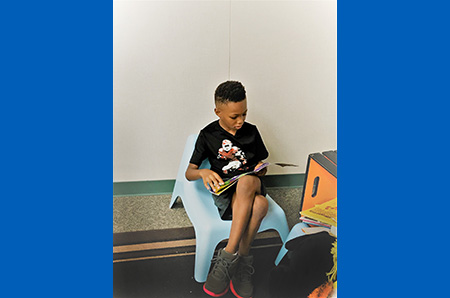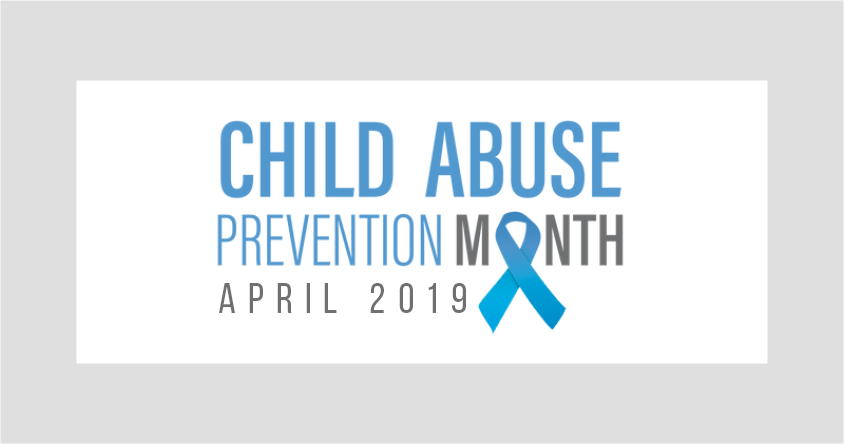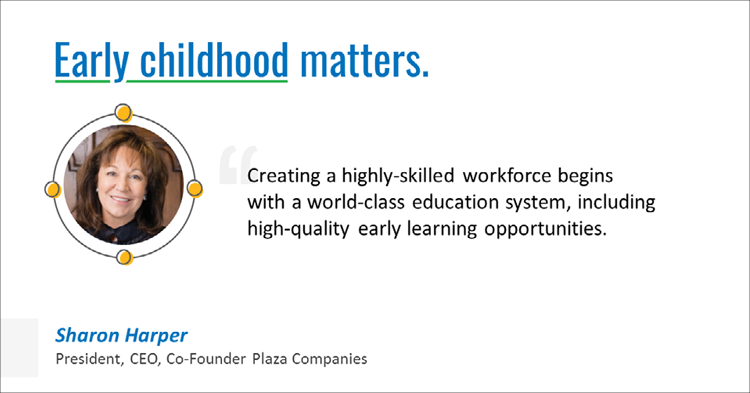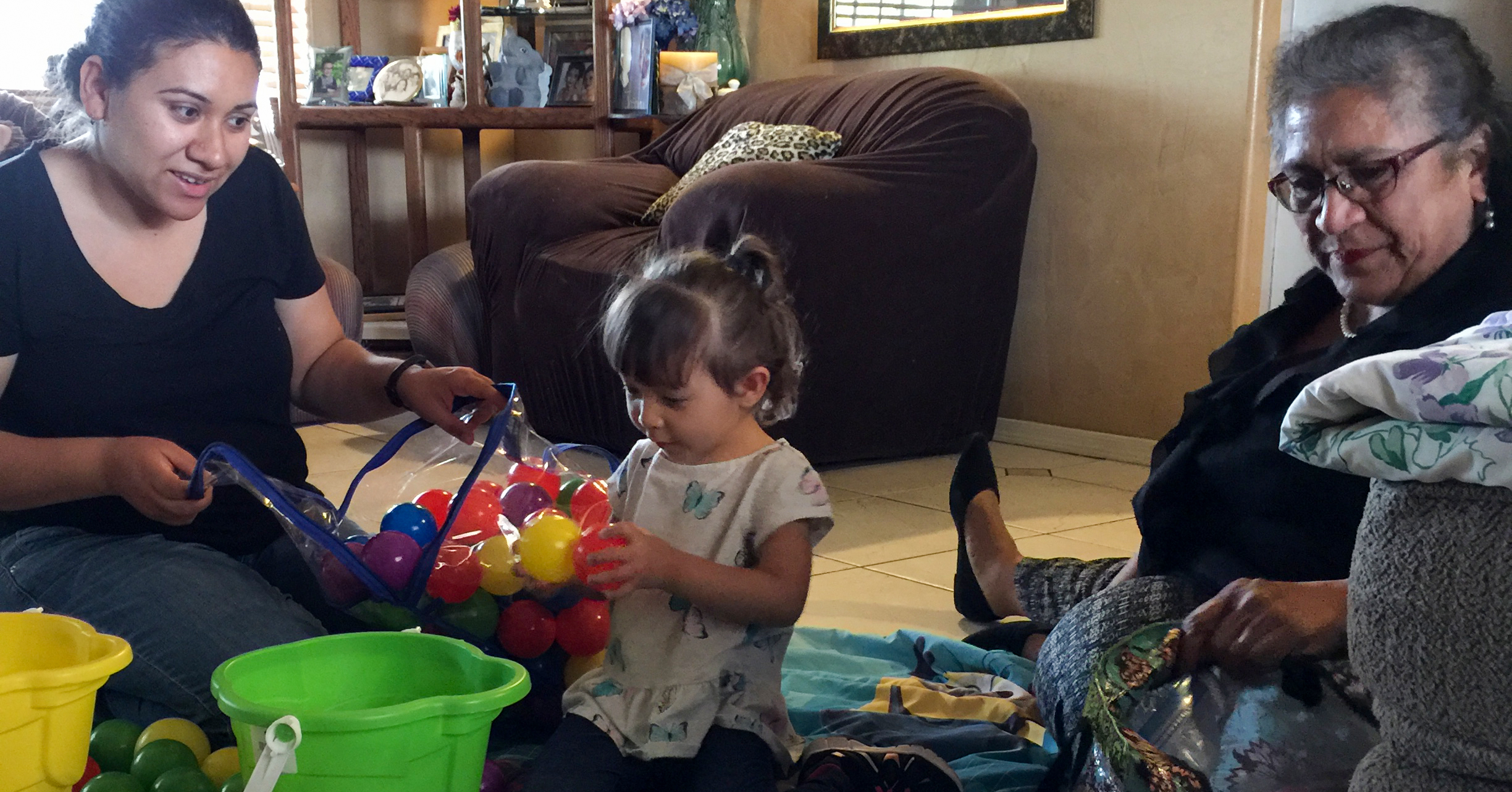
Lucy Martinez gets out of her SUV carrying a reusable grocery bag, a clear plastic container filled with different colored plastic balls and two sandbox pails – one yellow, one green.
She’s just arrived at her first home visit of the day. Julyana Garibay and her 2-year-old daughter Sophia open the front door to their house before Martinez has a chance to knock.
They’ve been waiting for her.
Martinez is a parent educator with Chicanos Por La Causa (CPLC) Parenting Arizona. Expectant mothers or families with a child up to 5 years old can sign up voluntarily for the home visits, in which a trained parent educator visits the family every other week. Visits typically include an activity for the parent and child, along with individualized parenting information, based on the family’s needs and in the comfort of their own home.
On this day, Martinez is greeted with a hug from the mother and a shy smile from Sophia. They quickly make their way to the living room, where Martinez tells them she wants to start with an activity on the floor. The plastic container filled with balls is dumped on a blanket and the little girl immediately picked one up and said, “Green ball!”
Both mom and parent educator cheer.
Martinez then picked up the small shovel that came with the pail.
“The scooper is another way to help with her hand-eye coordination,” she said. “There are lots of different ways you can use this. She can gather the different colors or use it to balance the balls.”
“I had one of these when my son was around 6-months-old,” Garibay said. “I think this is a good idea.”
Martinez spent more than two decades as an elementary school teacher, before deciding that she wanted to help children and families before they reach elementary school. She’s been a parent educator with different home visitation programs for almost eight years.
Individualized, targeted support
In those critical years before kids start school, positive relationships with adult caregivers help infants, toddlers and preschoolers learn, grow and thrive. But many families struggle with situations that can cause stress for parents and may compromise children’s healthy development. Some families find support through informal networks, community-based programs or family resource centers; others need and want more individualized, targeted support.
You might be interested in:
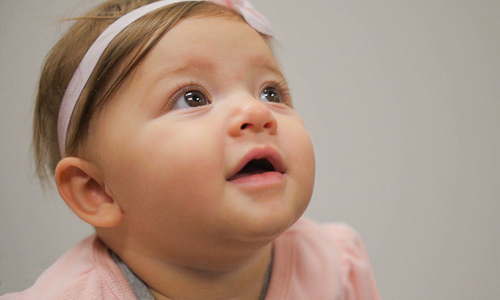
First Things First (FTF) meets this more intensive need by funding voluntary, evidence-based home visitation programs, such as the CPLC program, which follows the Parents as Teachers model. These one-on-one visits with trained providers have been shown to be an effective way to support and empower families and children experiencing various challenges, as well as to support the bonding and relationship between the parents and child.
The primary caregiver, who is typically a parent, but could also be a grandparent or another adult identified as a primary caregiver, receives regular in-home visits from a trained professional who provides parenting information, models ways to support healthy development and shares connections to other community resources.
“Home visitation increases positive parenting by teaching caregivers strategies that help them support their child’s health and learning that include how to manage difficult behaviors,” said Christine Waldbeiser, an FTF program specialist for Family Support and Literacy. “Home visitors also link families to resources that can help them overcome stressful situations in their lives, like unemployment and postpartum depression.”
Linking families to resources is a large part of the job, Martinez said.
“We want to provide resources for the whole family,” Martinez said. “Both parents and child are learning new skills—parenting skills and teaching the children.”
That’s why she starts all her visits by sharing a list of different community events, either sponsored by Parents as Teachers or free early childhood events going on near them. She explains the events and why they might be helpful for the child.
Other parents might need more specialized resources such as help enrolling in the Special Supplemental Nutrition Program for Women, Infants, and Children, known as WIC. Martinez is there to help.
“Many times we provide emotional support for the parents,” Martinez said. “If there’s a need, I’m someone who will listen.”
Positive outcomes for families and children
FTF recognizes that families benefit from long-term support and can face many obstacles along their parenting journey, Waldbeiser said. That’s why the organization funds five different Home Visitation models, including: Parents as Teachers, Healthy Families America, Nurse-Family Partnership, Early Head Start and Family Spirit.
“We looked for programs that are comprehensive and intensive, meaning they are holistic and can provide services to families for at least two years,” Waldbeiser said. “All the home visitation models selected have demonstrated positive outcomes for families and children, and have been proven to promote positive development, school readiness and enhance overall family functioning.”
All the programs have similar goals, but they differ in terms of the families they seek to enroll (see below for more information). In this way, families can be connected to programs that best meet their needs.
In State Fiscal Year 2018, FTF spent $17.5 million on home visitation statewide, making it the single largest funder of home visiting programs in Arizona. As a result, 5,809 families had stronger, more supportive relationships with their young children, and parents were able to get support to help them manage the challenges of parenting – and life.
“Home Visitation programs can lead to fewer behavior problems by helping parents understand how to help their child’s development, also the appropriate expectations for their child’s stage of development,” Waldbeiser said. “By the time the child enters school, they have stronger social and emotional skills that form a foundation for school success later.”
Rainy Couchenour was a parent educator with Parents as Teachers in Cochise County for three years before she became a supervisor. On a typical day she would visit between one and three families in their home; seeing them at least twice a month.
“Our primary focus as Parents as Teachers is the parent/child relationship,” Couchenour said.
Parent educators address topics like discipline, health, nutrition, sleep transitions and routine.
In the first visit, the parent educator does a family assessment to see how the family interacts with one another and determine who the family turns to for support. It also includes a review of the family’s access to medical and dental care. The child also receives a developmental screening, which is completed with the caregiver. The child’s communication skills, gross and fine motor skills are assessed with screening tools, along with hearing and vision screening.
On a recent visit with a different family, Martinez arrived at the home of a mother and a 2-month-old baby. This mother started with the program a few months before the baby was born. On this day, Martinez was scheduled to do a screening, but before she started, she took out two small books.

“This one is in black and white because your baby is still learning to use his eyes and can only see black and white,” she said. Martinez carries children’s books with her for every visit and typically leaves two books at each visit.
Martinez asked the mother questions such as does he move his head side-to-side? When laying on his tummy, does he try to lift his head? Does he clasp your finger when you put it in his hand? Does he follow your voice when you move?
She went over the evaluation with the mother, along with some fine-motor activities for the mother to work with baby before the next visit.
Another part of the home visitation program is to support the family’s well-being.
“We might refer the family to a food pantry or behavioral health services,” Couchenour said. We ask, “Are there programs that they might need that can provide them with services in our area?”
Once a month, the Parents as Teachers program holds family get-togethers with their families. These group activities help the families and children socialize with and learn from each other. It also, creates a supportive social network for the families to reduce isolation.
“Sometimes it’s helping families find recreation activities they can afford,” Martinez said.
Becoming a sounding board
A large part of the work is getting a family to open up with their struggles.
“You become a sounding board for the parents,” Couchenour said. “You are able to normalize what’s going on. Each child is unique and the things that worked for their first child may not work with the third.”
Eventually the parent educator becomes a familiar part of their life.
“We want to empower the parents to be the best teachers they can be,” Martinez said.
“All parents love to talk about their child,” Couchenour said. And the activities the parent educator does during each visit with the parent and child are based on the areas where the family and child need support. They are linked to different areas of development and are designed to show the parents how they can help their child achieve the goals identified for the child’s development and well-being.
For example, sometimes Couchenour would bring a bowl, salad tongs, and different cotton balls and have the child identify and pick up different colors.
“This was a fine motor skills activity using their fingers,” Couchenour said. “Then I would say to the parent, ‘Let’s make one for you.’”
She would help the parent find things already in the home to recreate the activity. Then she would leave information on the different types of milestones the child should be achieving and what to expect at that age so that the parents can keep practicing and working with the child in between home visits.
“We are helping them realize that they are capable parents who can help their child,” Couchenour said.
At Martinez’s home visit, little Sophia was having a bit of trouble sorting the yellow balls into the yellow bucket. So Martinez removed a few of the different color balls to make the task less overwhelming.
“This would be good to work with two colors with her at first,” Martinez told Garibay. “You can also ask her to make comparisons. “Which bucket has more balls? The yellow bucket or the green bucket?’ You’re building vocabulary to help her with her language.”
She encouraged Garibay to continue working with Sophia on matching and sorting.
“You can make it a simple game by wadding up colored paper or take out different socks for her to match, but make sure you give her time to respond,” Martinez said.
At the end of visit, they set their next appointment in two weeks.
Martinez left pleased with the hour spent with the family.
“We want to empower the parents to be the best teachers they can be,” Martinez said.
Five different models to meet the differing needs of Arizona families
All Home Visitation programs provide participating families of infants and toddlers with information, education, and support on parenting, child development and health topics while simultaneously assisting with connections to other resources or programs as needed. Home visitation programs can range in intensity and vary with respect to the age of the child, the risk status of the family, the background and training of the home visitor, and the range of services offered. Having a portfolio of high-quality home visitation programs is beneficial for serving the diverse needs of Arizona’s children and families. First Things First funds support the implementation of the following evidence-based models which families enroll voluntarily:
Parents as Teachers (PAT) serves families with a pregnant mother and/or parents/caregivers of children birth to 5 years old. Parent educators work with parents to strengthen protective factors and ensure that young children are healthy, safe, and ready to learn.
Healthy Families America (HFA) is a home visiting program model designed to work with families who may have histories of trauma, intimate partner violence, mental health issues, and/or substance abuse issues. Visits begin prenatally or within the first three months after a child’s birth and continue until children are between 3 and 5 years old.
Nurse-Family Partnership (NFP) serves first-time, low-income prenatal mothers, caregivers, and their children from no later than 28th week of pregnancy until the child turns 2. The program includes one-on-one home visits by a trained public health registered nurse to participating clients.
Early Head Start Home Visiting (EHS-HV) is intended for low-income families with children birth to three years old. EHS provides early, continuous, intensive, and comprehensive child development and family support services and is commonly a precursor to enrollment in Head Start preschool.
Family Spirit is a model created especially for pregnant Native American mothers and families with children birth to 3 years old. The model incorporates traditional tribal teachings and native language into the curriculum and aims to promote mothers’ and families’ parenting, coping, and problem-solving skills to address factors such as demographic challenges, family-of-origin problems, and personal stressors.


